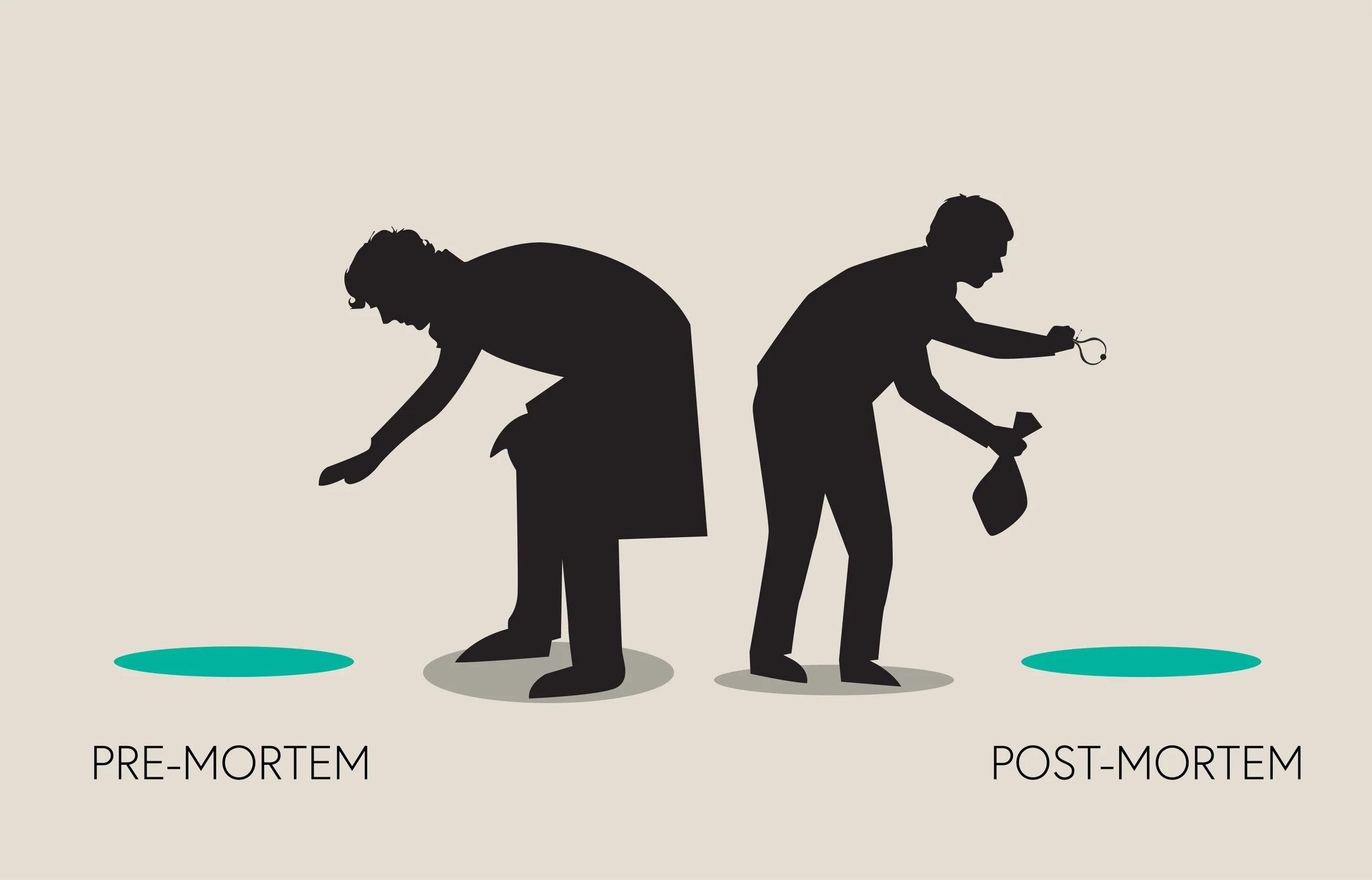What exactly is a Project Pre-mortem?
Project management is an important role that requires a broad skillset.
Not only do you need to be an excellent communicator, people organiser, and a gifted manager of time and money, you also need to be good at anticipating when and where things might go wrong.
So how do you develop a knack for predicting project snags?
A lot of this comes from experience, but even the most seasoned project managers can benefit from carrying out a project ‘pre-mortem.’
Devised by the psychologist Gary Klein, it’s a thought exercise designed to identify errors that could occur with a project before you start any significant work on it.
This differentiates it from a project ‘postmortem’ which waits until a project is completed and then examines what could have gone better.
Why are pre-mortems valuable?
When it comes to problem-solving, we tend to be more reactive than proactive.
This is because it’s easier to be praised for solving an issue than for preventing it from happening in the first place.
If you think about it, this makes no sense because avoiding a problem is far better than letting it occur because the former costs considerably less in terms of resources.
For example, it’s a lot cheaper to install a fire alarm than it is to repair a fire-ravaged building.
Despite this, many of us begin projects without paying much attention to this philosophy of ‘prevention is better than cure.’
Pre-mortems are, therefore, a valuable tool for helping us to avoid costly future errors.
How do I perform a project pre-mortem?
Before you begin your pre-mortem, you will need a project plan that details as much information as possible about the scope and objectives of your project.
Once you have this, you then need to set aside some time to brief everyone participating in your project.
Then, you need to follow these four steps:
1. Prepare
Brief everyone on the project plan. Assign someone the role of the project leader and ask them to inform everyone that the project has failed.
2. Why did it fail?
Either in teams or as individuals, get your colleagues to think of all the possible reasons why the project could have failed. Give them 30 mins to perform this task.
Make it clear that they mustn’t try and censor their responses.
3. Share your reasons
Each team or individual then takes it in turn to explain their choices.
Make sure you record these in a spreadsheet and be aware of duplication.
4. Review and revise
The project leader reviews all the reasons given and uses them to strengthen and revise the existing project plan.
The beauty of this tool is that it helps to identify any harmful assumptions up front and will give you greater confidence in your project outcomes going forward.






